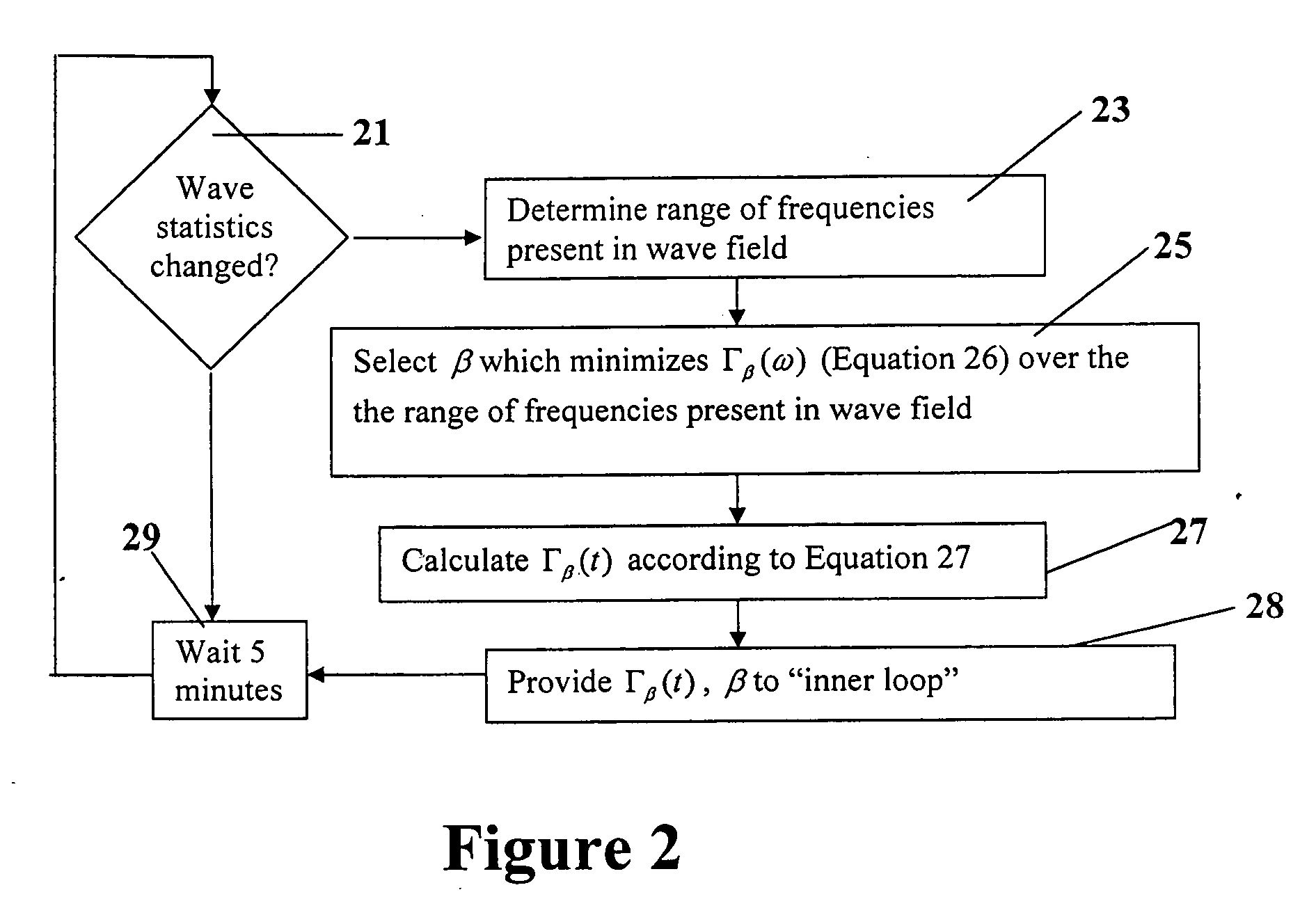Advanced wave energy converter control
a technology of energy converters and wave energy, applied in the direction of electric generator control, mechanical equipment, machines/engines, etc., can solve the problems of less than optimal, and achieve the effects of improving control systems, less errors, and greater power efficiency
- Summary
- Abstract
- Description
- Claims
- Application Information
AI Technical Summary
Benefits of technology
Problems solved by technology
Method used
Image
Examples
Embodiment Construction
[0041]FIG. 1 shows the main components of a wave energy converter (WEC) system for use in practicing the invention. The WEC includes a first body or float, 100, and a second body or spar, 200. The first body (e.g., float) is designed to move generally in phase with the waves and the second body (e.g., spar) is designed to move generally out of phase with the waves, or to be held relatively fixed at mechanical ground. A power take-off (PTO) device, 300, is coupled between the first and second bodies and converts their relative motion into useful energy and is capable of receiving power from, or transmitting power to, the first and second bodies. The PTO may be any suitable device which can perform this function. The two bodies, along with the PTO, comprise a wave energy converter, or WEC.
[0042]Signals from an upstream wave detection system 500, responsive to incoming waves 600, are supplied to a wave predictive subsystem 700 whose signals are supplied to a data processor 402 function...
PUM
 Login to View More
Login to View More Abstract
Description
Claims
Application Information
 Login to View More
Login to View More - R&D
- Intellectual Property
- Life Sciences
- Materials
- Tech Scout
- Unparalleled Data Quality
- Higher Quality Content
- 60% Fewer Hallucinations
Browse by: Latest US Patents, China's latest patents, Technical Efficacy Thesaurus, Application Domain, Technology Topic, Popular Technical Reports.
© 2025 PatSnap. All rights reserved.Legal|Privacy policy|Modern Slavery Act Transparency Statement|Sitemap|About US| Contact US: help@patsnap.com



